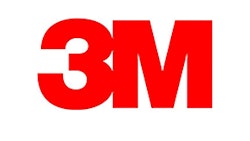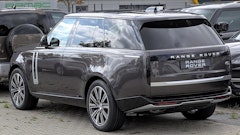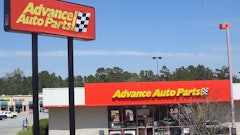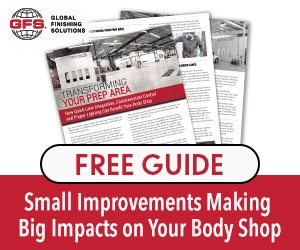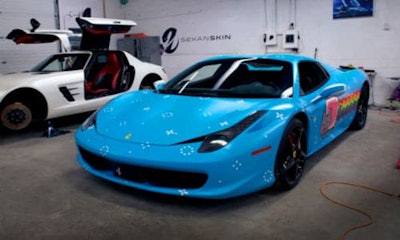
By Jeff Sanford
Toronto, Ontario — March 29, 2016 — Vinyl wraps can be seen on many high-end vehicles these days. Tuner fans use them to change a car’s colour instead of getting a paint job. Businesses are using them to brand their vehicles. Over the past few years the market for wraps has exploded. For anyone running a vehicle paint facility, it might make sense to ask: Is this a service I need to offer?
Those who offer the service can charge between $3,000 and $5,000 a job, so there can be money in offering wraps.
Last year vinyl wraps grabbed a lot of attention when when fabulously successful and famous-among-millennials Toronto DJ and producer Deamau5 had a Ferrari 458 wrapped in a baby blue vinyl featuring a cartoon cat that looked a bit like the famous Ferrari stallion logo. Deadmau5, real name Joel Zimmerman, called the car the Purrari, and whenever he took it out photos began appearing immediately on social media.
A Toronto company called Sekanskin did the wrap. You can see more on the project in the video below. But eventually Ferrari headquarters got whiff of what was going on and sent Zimmerman a cease-and-desist letter. The Italian car maker demanded he switch the car back to its original colour and design, which Zimmerman did, but not before sending out some snarky tweets. “Whatever. It’s just a normal ass 458 now. All good,” Zimmerman tweeted. Nissan, apparently sensing some good publicity, stepped in and offered Zimmerman one of its cars that it said he was free to wrap.
The trend is alive and well, according to Jonathan Glen, owner of Canawrap Imaging. He notes wraps are becoming ubiquitous in the aftermarket auto sector. “Over the last couple of years it’s become mainstream. You cannot go through Motorama without seeing wrapped vehicles. The wrap community is growing. It’s hugely popular,” says Glen.
When asked about the skills necessary to get into this line of work, Glen emphasized the graphic design side of the business. The largest segment of his current revenue comes from local businesses that want a vehicle branded with their logo. Producing that wrap then is not just about getting the wrap on the car, but involves producing the graphic design that goes on the wrap, and that’s a special set of skills. “My Dad owned a sign company. I was raised in the graphics industry,” says Glen. “This industry definitely comes from a graphics side.”
Having someone on staff, or at least working freelance, who can produce graphics is something anyone wanting to get into this segment will have to consider. Considering the number of graphic designers graduating each year from college, there is a lot of talent available in this area.
Going on to describe the nature of the market, Glen notes the other big chunk of his business are car owners into pure customization. Many clients don’t need graphics. They just want a colour change.
“The advertising wraps are the big part of the business. The colour change wraps are more seasonal. Once the sun starts coming out again and people are outside, people are getting these wraps to make the car look sexy,” says Glen. “In most cases it’s people who have got their tuner car and are customizing that, getting the rims, having the suspension done, that kind of thing.”
There are also sports teams that get this work done (team buses for universities are one example), and, of course, the latest trend, all those matte finishes that seem to have become the look of the moment. “There are a lot of those. They’ve become really popular,” says Glen. His company also does something called “chrome deletes,” which is when the owner of a vehicle covers all of the chrome accessories on a car in a vinyl wrap that matches the body colour. This has become a very popular look on expensive, high-end cars of late.
Of course, the market continues to evolve. There are newer wraps coming out now that have chrome and textured finishes, and so expect to see those in the months to come. “There are several different avenues now,” says Glen. The choice of colours has also expanded greatly over the last couple of years. Another possible market niche, espcially for shops in more rural areas, are camouflage wraps that are popular on off-road vehicles and ATVs used by hunters.
Typically those applying wraps are charging between $3,000 and $5,000 a job. But while the job may seem basic—clean the surface, apply the wrap, apply heat—there are many tips and techniques that need to be mastered and only come with experience. “I’ve been in the industry for a long time. It is definitely one of those industries where you get what you pay for,” says Glen. “Some people are new to this and I find there is often an underestimation of what it takes. You want to have someone walk away and think the vehicle was painted.”
Typically, wraps stay on for about five years. “I tell people five to seven years. If you’re taking care of it, it will last that long,” says Glen.
When the wrap comes off the paint still “looks fabulous,” he says. “You’re protecting the paint. These wraps are 100 percent designed to be removable. It’s a paint protection film. Warm it up, and take it off. The paint is gorgeous. There are no swirls, no pebbling,” says Glen.
A couple of “rules of thumb” from those in the industry: Don’t wrap cars that are older than seven years and cheaper than $40,000. Only late model vehicles have the precise space between panels (and the correct placement of body panels) necessary to apply a wrap. On older vehicles the front of the car might be a single piece of an odd shape, and that’s going to be difficult to wrap. Modern vehicles are now typically uniform in the way body panels sit on the frame. These smaller panels can more easily be successfully wrapped. Rims, obviously, should never be wrapped as they are subject to too much stress, friction and debris. Changing the colour of the wheels to match a wrap requires they be powder coated or painted.
Today, a couple of the main manufacturers, 3M among them, offer a two-day certification course on wraps. One source claims there are still less than ten certified wrap experts in the Greater Toronto Area. A quality colour change will take from eight to 25 hours depending on model.
“A truck is going to take longer than a mini-Cooper, obviously,” says Glen. But if your business is one that has bays to repair and paint cars, this is something that can be done in a shop. It’ll take some time to get up to speed, but training is available and the process is relatively straight-forward.
Did Ferrari make a marketing mistake in insisting Zimmerman give up the wrap on his Ferrari? Arguably. Wraps have become popular. Forcing the Toronto DJ to unwrap his car has turned one of the taste-makers of the millennial generation off of the brand.
Nissan offered Zimmerman a replacement, even designing a digital look-alike Nissan GT-R and then tweeting the picture to the Deadmau5 account, saying, “Hey @deadmau5, heard what happened to your car. Good news? We found a replacement, ready right meow. #GTR”
For his part, Zimmerman is reportedly replacing his naked and now plain-vanilla coloured Ferrari with either a McLaren 650S Spider or a Lambourghini.
You can check out a time-lapse view of the making of the Purrari in the player below.




